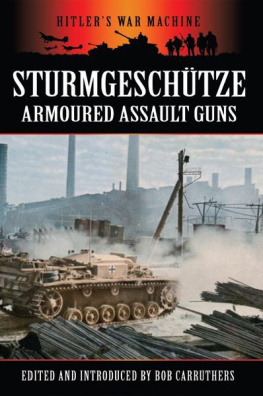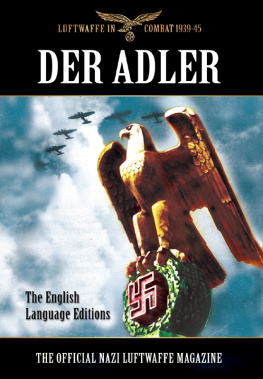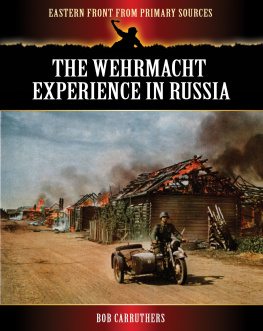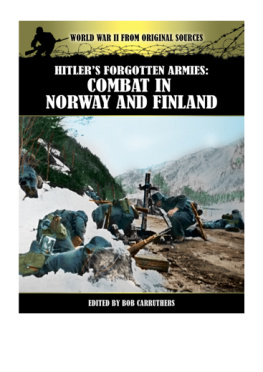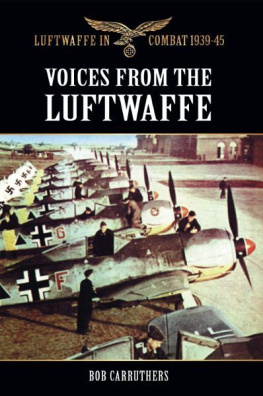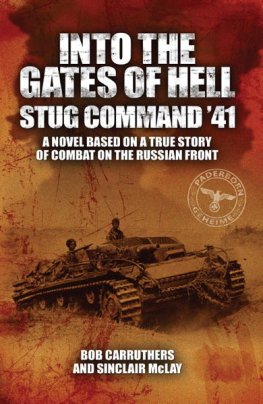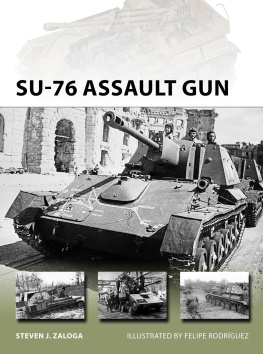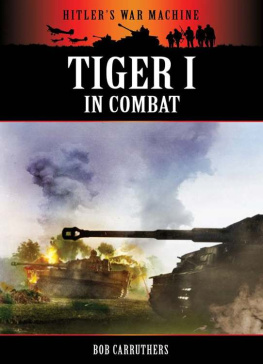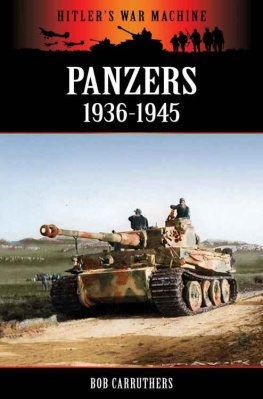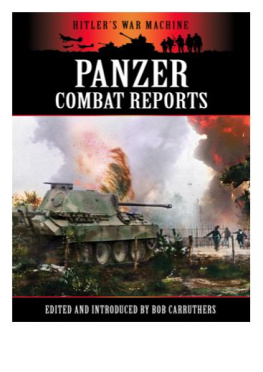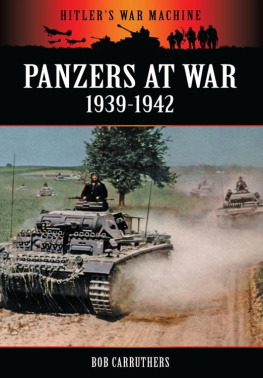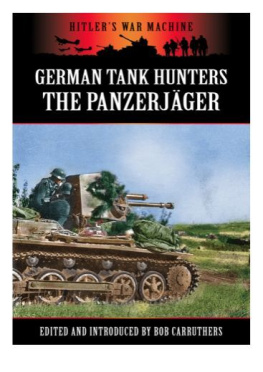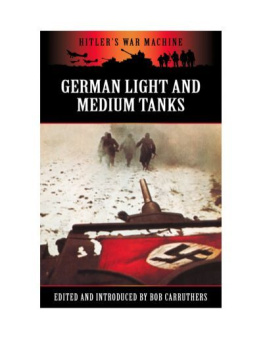
This edition published in 2013 by
Pen & Sword Military
An imprint of
Pen & Sword Books Ltd
47 Church Street
Barnsley
South Yorkshire
S70 2AS
First published in Great Britain in 2012 in digital format by
Coda Books Ltd.
Copyright Coda Books Ltd, 2012
Published under licence by Pen & Sword Books Ltd.
ISBN: 978 1 78159 218 2
EPUB ISBN: 978 1 47384 446 9
PRC ISBN: 978 1 47384 453 7
A CIP catalogue record for this book is
available from the British Library
All rights reserved. No part of this book may be reproduced or transmitted in
any form or by any means, electronic or mechanical including photocopying,
recording or by any information storage and retrieval system, without permission
from the Publisher in writing.
Printed and bound in India
By Replika Press Pvt. Ltd.
Pen & Sword Books Ltd incorporates the Imprints of Pen & Sword Aviation, Pen
& Sword Family History, Pen & Sword Maritime, Pen & Sword Military, Pen
& Sword Discovery, Pen & Sword Politics, Pen & Sword Atlas, Pen & Sword
Archaeology, Wharncliffe Local History, Wharncliffe True Crime, Wharncliffe
Transport, Pen & Sword Select, Pen & Sword Military Classics, Leo Cooper, The
Praetorian Press, Claymore Press, Remember When, Seaforth Publishing and
Frontline Publishing
For a complete list of Pen & Sword titles please contact
PEN & SWORD BOOKS LIMITED
47 Church Street, Barnsley, South Yorkshire, S70 2AS, England
E-mail:
Website: www.pen-and-sword.co.uk
CONTENTS
INTRODUCTION
I n a career marked by a litany of mistakes, surely Hitlers biggest mistake of all was to drag a reluctant US into World War II. Even after the Japanese attack on Pearl Harbour Hitler still had the option to keep the US out of the war. In a typical act of delusion Hitler, on 11th December 1941, declared war on the largest industrial nation on earth. From that moment onwards the fate of Nazi Germany was sealed. It took some months to awake the sleeping giant, but once the US juggernaut began to roll the end result of World War II was never in question.
While the US was busy assembling its new armies, navies and air forces, the US Intelligence Service was already beginning to gather intelligence on its new enemy. This information was collated and disseminated to the troops who needed it, in the form of two main monthly intelligence bulletins. These were Tactical and Technical Trends which first appeared in June 1942 and the Intelligence Bulletin which began to appear from September 1942 onwards.
The main focus for the US was initially on the war with Japan and a great majority of the early reports are concerned with the war in the Pacific. However, as America began to come up to speed US forces were soon engaged in North Africa, followed by Sicily, Italy and finally Northern Europe. As the war progressed the requirement for good intelligence of German battlefield tactics became more and more important and in consequence there are more and more reports of German fighting techniques available to us. The vast majority of those reports concerned the fighting in Russia and it is those reports which form the bulk of what you are about to read here.
The material for the two US intelligence journals was originally collected from British combat reports, German newspapers, captured German documents, German training manuals and Soviet sources. As such the quality of much of what was printed was highly variable, some reports are very accurate, while in others, the precision of the information is questionable to say the least, but thats what makes these reports so fascinating. Regardless of the overall accuracy this is a priceless glimpse into how the men in the front lines learned about their enemy, and as such it presents us with a invaluable insight into how the events of the Eastern Front were perceived at the time when they actually unfolded. The reports also provide us with a host of information concerning the minor aspects of the thousands of tactical combats being waged day in and day out which expand our knowledge of the realities of the fighting in Russia.
Thank you for buying this book. I hope you enjoy reading these long forgotten reports as much as I enjoyed discovering them and collating them for you. Other volumes in this series are already in preparation and I hope you will decide to join me in other discoveries as the series develops.
Bob Carruthers
CHAPTER 1
STURMGESCHTZE III & IV
T he Sturmgeschtz rumbling forward into action is one of the iconic images of World War II. The StuG, as it is often known, is frequently mistaken for a main battle tank, however, this is something of misconception. There were many occasions on which the Sturmgeschtz (or Sturmgeschtze in the plural) performed the same functions as a tank, as mobile artillery, the StuGs were essentially infantry support weapons and were designed for a specific tactical purpose which was very different to that of the tank formations.
Whereas the tanks were intended to force a breakthrough and keep going deep into enemy territory the StuG, on the other hand, was intended to provide close infantry support against enemy field defences using direct-fire from its main gun. As the war wore on the Sturmgeschtze, with considerable success, were also utilised in the role of tank destroyers and mobile artillery so there undoubtedly was some blurring of the roles.
In consequence of their versatility, Sturmgeschtze III and IV mobile assault guns were manufactured, in a large number of variants, from 1939 to 1945. Over 10,000 vehicles were eventually produced by the hard-pressed German armaments industry making the Sturmgeschtz, in all of its variants, the most produced German armoured fighting vehicle of the war.
Although the Sturmgeschtz III was not actually deployed until 1940, a small number of what were essentially prototype machines were deployed for the campaign in the west. During the course of the war the anti-tank qualities of the up-gunned Sturmgeschtz III were soon appreciated, and as a result the Sturmgeschtz III entered a sustained production run and eventually accounted for the longest armoured fighting vehicle production run in Germany during World War II. Sturmgeschtze saw action on all fronts and, as the situation deteriorated, they were pressed into service for a wide number of ancillary roles.

Sturmgeschtzschtz rolling across the open steppe during the heady days of the advance into the Russian hinterland during June 1941.
The most widely produced vehicle of the Sturmgeschtz family was, of course, the now legendary Sturmgeschtz III. It was not a purpose designed vehicle; as it was built around the proven chassis of the Panzer III tank which was adapted to provide a new type of armoured fighting vehicle for a very specific role. The StuG III was intended to provide a mobile, well armoured, but relatively light artillery piece for close infantry support in the assault.
All StuG IIIs were operated by a four man crew which comprised a commander, gunner, loader/radio operator and driver. The smaller crew and lack of a turret were the main disadvantages of the StuG but the low silhouette to an extent compensated.
The Sturmgeschtz III was still under development and was therefore not available in a combat role for the 1939 invasion of Poland. It finally made its operational debut in France in 1940 where it first saw action in the field but only in relatively small numbers. Only twenty four machines were actually deployed, but the evidence from the field was convincing and the Sturmgeschtz III was considered to be an instant success. The Sturmgeschtz III was again deployed and proved its effectiveness in the lightning campaigns which swept the Wehrmacht through the Balkans and into Greece. In June 1941 the Sturmgeschtz III was deployed in greater numbers for the attack on Russia and, to a far more limited extent, they also saw action with Rommel in North Africa.
Next page
